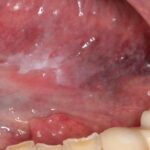
Raman scattering-based diagnostic systems use the vibrational modes of molecular bonds to characterise biochemical fingerprints that arise from the interaction between light generated by a laser and the atomic bonds of molecules. Raman spectroscopy (RS) is able to characterise samples by analysing the peak of the wavelengths and by quantifying the intensity of the Raman bands. Metabolites secreted by tumours into the environment can be detected by RS examination and be used for cancer diagnosis. Increased proteins and nucleic acids and decreased lipids in the surrounding tissues and biological fluids has been reported to be an RS indicator of carcinogenesis. Alterations in the molecular signature can indicate head and neck oncological changes and conventional RS could be used to screen for early-stage cancer. Oral cavity and oropharyngeal cancers (OOC) account for more than half of head and neck cancers (HNC) with squamous cell carcinoma (SCC) being most common type of cancer.
The aim of this systematic review was to investigate the potential value of Raman scattering-based diagnostic systems in OOC diagnosis.
Methods
The PubMed database was searched and the review conducted based on the Preferred Reporting Items for Systematic Review and Meta-Analyses framework. Only studies written in English that contained detailed information about the RS method, samples, data analysis, test parameters, and Raman spectra were included. The findings of this review were presented as a written narrative.
Results
- 110 articles were retrieved across the initial database search. Following removal of duplicates and implementation of the inclusion and exclusion criteria, 26 studies were included for review.
- All studies investigated cancer diagnosis with RS examination and 2 studies explored cancer grading, 2 evaluated disease recurrence and another 2 assessed treatment efficacy using RS.
- Cancer diagnosis, tumour grading, treatment assessment and cancer recurrence achieved a maximum accuracy of 98%, 97.24%, 95% and 77% respectively using RS examination.
- Biochemical fingerprints associated with OOC were assayed in the fingerprint region (FPR) and in the high wave numbers region (HWR) with HWR having 98% accuracy which was the highest.
- The main discriminants for HNC diagnosis were proteins, lipids, nucleic acids and the combination of these discriminants had a maximum accuracy of 97.24% for cancer detection. Water has a maximum accuracy of 98% for cancer detection and is another important discriminant.
Conclusions
The authors concluded: –
…Raman spectroscopy can successfully detect oral cavity and oropharyngeal cancer from the early stages of the disease. Moreover, it can reveal the progression from premalignant lesions to invasive SCC and tumour recurrence, and it can also be used to evaluate tumour margins.
Comments
RS can detect subtle changes in samples that have been induced by age, tobacco use, or healing-related processes. This technique can also identify subtle changes caused by alterations in DNA and cell metabolism that occur during the first stages of carcinogenesis. The ability to examine OOC in vivo have also improved and the detection of premalignant lesions is now possible. The 5-year survival rate for head and neck squamous cell carcinoma is approximately 50%. Early diagnosis increases survival rate but most HNC are diagnosed in the advanced stages. Therefore, RS could have important implications in the management and survival of patients diagnosed with HNC. Radiation-related changes in local tissues and biological fluids can also be detected using RS however, it is important to consider how histological variations at different anatomical sites impact RS analysis. This includes mucosal keratinization and the submucosal composition of lipids and proteins.
Advanced staged cancers have higher diagnostic rates compared with early stage cancers with T1-T2 and T3-T4 having different intensities of Raman spectra of protein, lipids, and DNA. Discriminant Raman fingerprints differ among oncological pathoses and well-differentiated oral SCCs can be distinguished from moderately and poorly differentiated SCC using RS examination. These differences may result from elevated metabolic activity in advanced cancers. Tumour spread and progression involves abnormal cell division and proliferation which can be related to increased protein and nucleic acid metabolism. Increased metabolism and rapid cellular turnover causes phospholipid degradation in cancer cells which results in decreased Raman signal therefore, lipids are also indicators of cancer progression. The water concentration in tumoral tissues and cell nuclei can correlate with intense level of cellular metabolism in cancerous samples. Furthermore, increased Raman signal intensity for haem and haemoglobin can reveal neoplastic angiogenesis.
Links
Primary Paper
Faur CI, Falamas A, Chirila M, Roman RC, Rotaru H, Moldovan MA, Albu S, Baciut M, Robu I, Hedesiu M. Raman spectroscopy in oral cavity and oropharyngeal cancer: a systematic review. Int J Oral Maxillofac Surg. 2022 Mar 10:S0901-5027(22)00063-7. doi: 10.1016/j.ijom.2022.02.015. Epub ahead of print. PMID: 35282942.
Other references
Dental Elf – 21st Jul 2021
Dental Elf – 7th Feb 2022
Picture Credits
By Coronation Dental Specialty Group – Own work, CC BY-SA 4.0, Link
